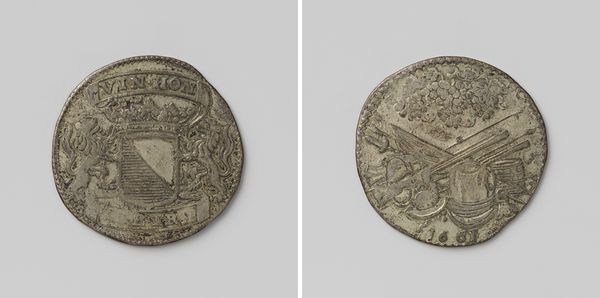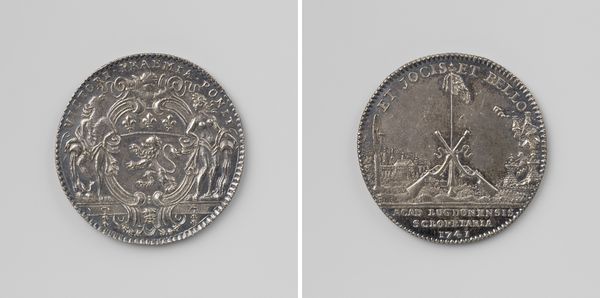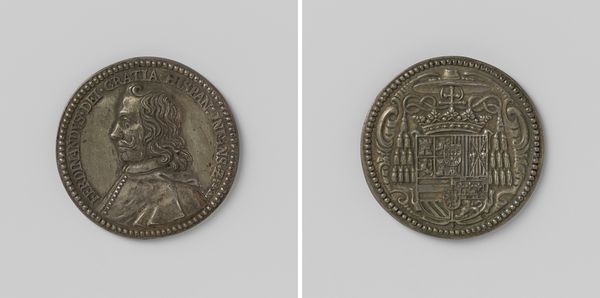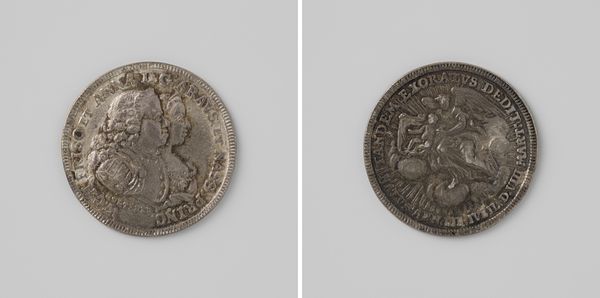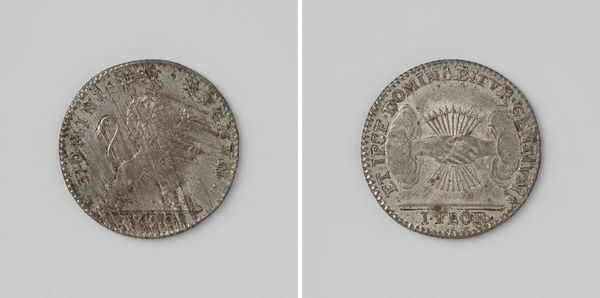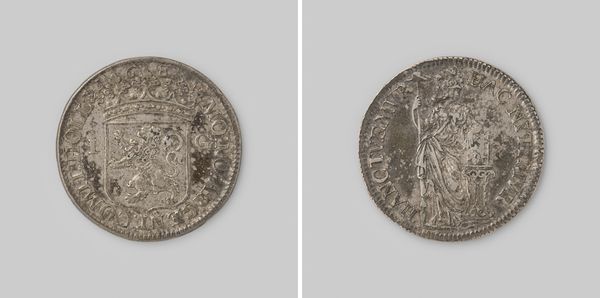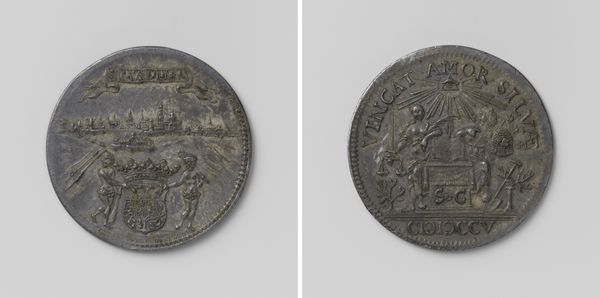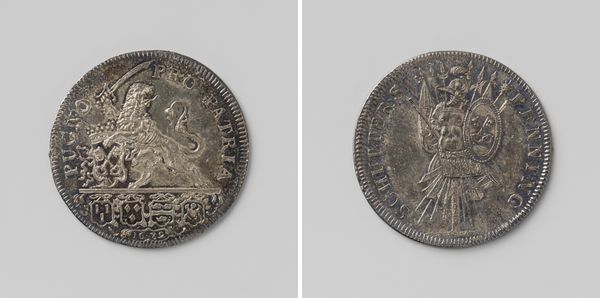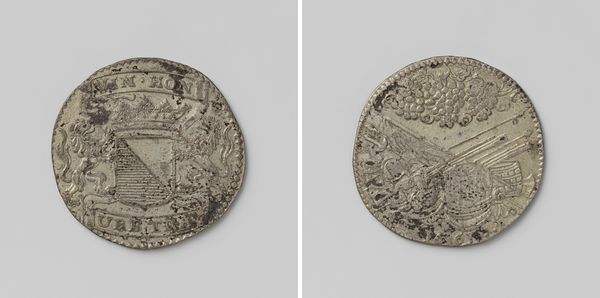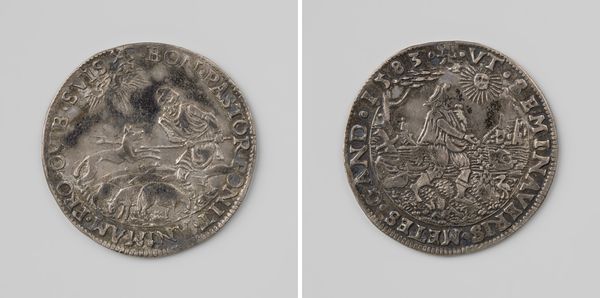
Schutterij van Utrecht, penning die schutters recht gaf op een kan wijn 1661
0:00
0:00
metal, engraving
#
dutch-golden-age
#
metal
#
history-painting
#
engraving
Dimensions: diameter 3 cm, weight 6.93 gr
Copyright: Rijks Museum: Open Domain
This Schutterij token, entitling civil guards to wine, was made in Utrecht by Roelof van Cuylenburch, likely in the mid-17th century. Struck in silver, a precious metal associated with currency, it is a small object carrying significant social meaning. The processes used to create this token speak volumes about its cultural context. Unlike traditional artistic mediums such as painting or sculpture, this token was created through die-striking, a technique more commonly associated with mass production and monetary systems. As we can see from the images, the impression has left a slightly raised decoration on the coin. It suggests a society deeply intertwined with commerce and civic life, and the die-striking process mirrors that of a society dependent on systems of exchange and value. The token’s material, silver, further underscores its significance. Beyond its inherent value, silver also symbolizes status and authority, highlighting the privileges afforded to members of the Schutterij, or civil guard. The token serves as a tangible symbol of their role in maintaining order and security within the city, and the drink they were entitled to as a result of their service. By examining the materials, processes, and context of this token, we gain insight into the social and economic dynamics of 17th-century Utrecht, challenging traditional distinctions between art, craft, and everyday life.
Comments
No comments
Be the first to comment and join the conversation on the ultimate creative platform.
